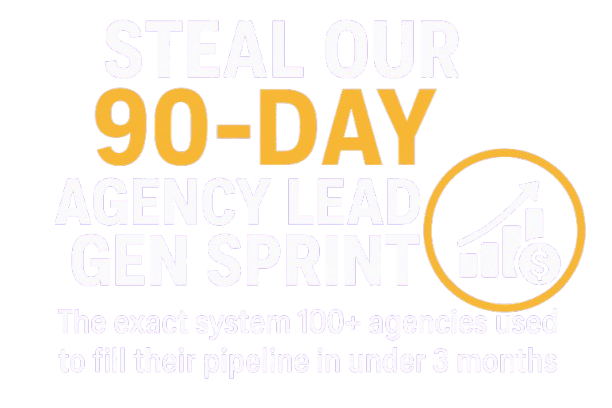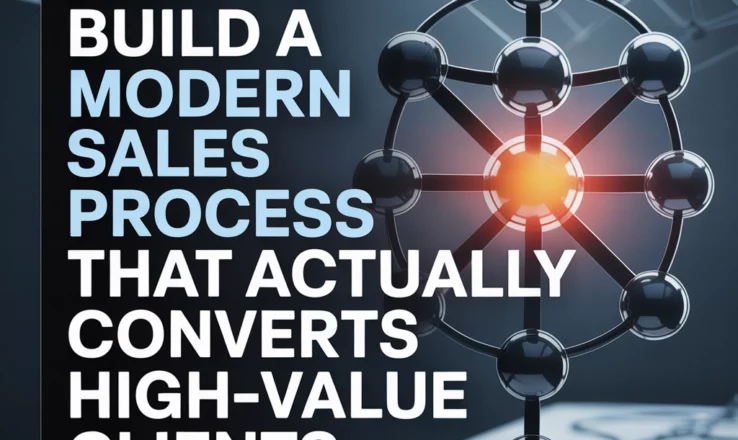
Here's the uncomfortable truth: your agency's sales process is probably stuck in 2015, and it's costing you millions in lost revenue.
I've been in the trenches with agency founders for over 15 years, and I've watched brilliant operators fail to close high-value clients not because their service sucks, but because they're using outdated sales methodologies that sophisticated buyers see right through.
Today, we're going to tear down everything you think you know about agency sales and rebuild it using frameworks that actually convert enterprise clients. This isn't theory, these are battle-tested processes I've used to help agencies scale from $1M to $10M+ ARR.
All I ask is that you take this seriously. We're going deep, and I need you to do the work. Ready? Let's go.
The Evolution of High-Value B2B Sales: Why Old Methods Are Dead
Before we dive into building your new process, you need to understand how dramatically the B2B buying landscape has shifted. This isn't just "digital transformation", it's a complete rewiring of how enterprise buyers evaluate and purchase services.
The Historical Context
Back in the 1980s and 1990s, sales was relationship-driven and information-scarce. Buyers needed salespeople to access product information, pricing, and case studies. The famous Challenger Sale methodology worked because buyers genuinely needed to be "challenged" with new information.
But here's what changed: According to Gartner's research, today's B2B buyers complete 57% of their purchasing decision before ever talking to a salesperson. For high-value service purchases, this number jumps to 67%.
The Modern Reality
Enterprise buyers now arrive at sales conversations armed with:
- Comprehensive competitive analysis
- Detailed ROI calculations
- Internal stakeholder alignment
- Specific budget parameters
- Timeline constraints
They don't need you to educate them, they need you to prove you can execute better than the competition.

The Framework: Value-First Sales Architecture
Here's the process that's working right now for agencies converting $100K+ deals. I call it Value-First Sales Architecture (VFSA), and it flips traditional sales methodology on its head.
Instead of starting with discovery and ending with value, we start with value demonstration and end with implementation planning. This approach aligns with how modern buyers actually want to engage.
Stage 1: Pre-Contact Value Research (The Foundation)
Before you ever reach out to a prospect, you need to complete what I call "Value Research." This isn't basic company research, this is deep competitive and market analysis that positions you as an informed strategic partner from day one.
Step 1: Market Position Analysis
Use tools like SEMrush and Ahrefs to analyze their current digital footprint. But here's the key: don't just look at their metrics. Analyze their competitive position relative to their top 3-5 competitors.
Create a competitive matrix that shows:
- Traffic gaps vs. competitors
- Content themes they're missing
- Conversion optimization opportunities
- Technical SEO vulnerabilities
Step 2: Financial Impact Modeling
This is where most agencies fail. You need to translate your analysis into specific financial projections. Use their industry benchmarks and revenue data (available through platforms like ZoomInfo or Apollo) to model potential impact.
For example, if you identify that their main competitor gets 40% more organic traffic, calculate the revenue impact of closing that gap. If you know their industry's average conversion rate is 2.3% and theirs is 1.8%, model the revenue impact of optimization.
Step 3: Implementation Roadmap Creation
Before your first conversation, create a preliminary 90-day roadmap showing exactly how you'd approach their specific challenges. This isn't a proposal, it's a strategic framework that demonstrates your expertise.
Stage 2: Value-Forward Initial Outreach
Traditional cold outreach focuses on pain points and meetings. Modern outreach leads with value and insights.
The Research-Forward Email Framework
Here's the template that's currently generating 23% response rates for high-value prospects:
Subject: [Specific Insight About Their Business]
Hi [Name],
I was analyzing [Company]'s digital strategy against [Specific Competitor], and noticed something that could impact your Q4 numbers.
[Specific observation with data]
This usually translates to approximately [financial impact] in lost revenue opportunity.
I've put together a brief analysis showing how [specific strategy] could close this gap in the next 90 days. Worth a 15-minute conversation?
Best,
[Your name]
The key is leading with a specific, data-backed insight rather than generic value propositions.
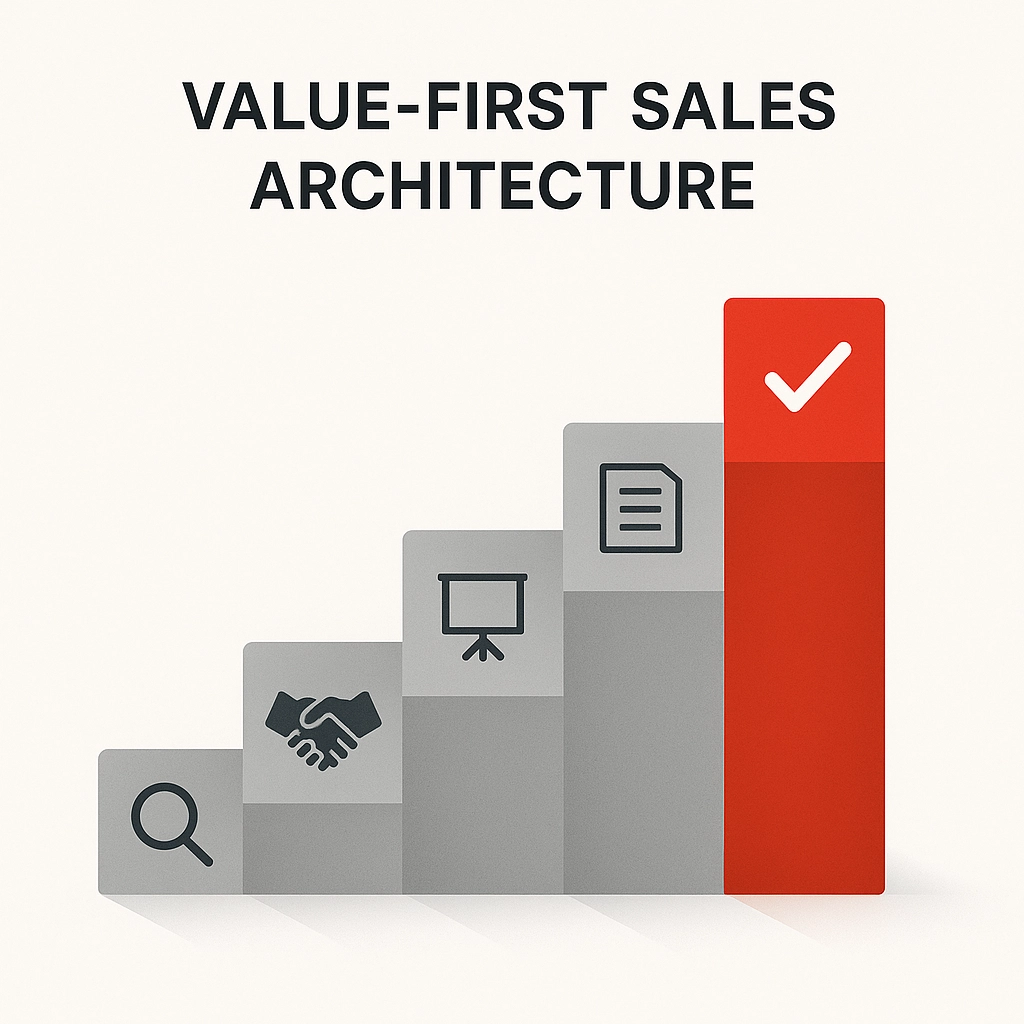
Stage 3: Discovery Through Value Demonstration
Traditional discovery asks prospects to explain their problems. Modern discovery demonstrates your understanding of their problems while uncovering implementation details.
The Pre-Discovery Audit Presentation
Before your discovery call, create a 10-slide presentation that includes:
- Competitive Analysis: Show exactly where they stand vs. competition
- Opportunity Identification: Highlight 3-5 specific growth opportunities
- Impact Modeling: Quantify potential results with conservative projections
- Implementation Preview: Show how you'd approach their specific situation
- Timeline & Investment Overview: Provide transparent expectations
During the call, present this analysis first, then transition into discovery questions that focus on implementation details rather than problem identification.
Discovery Questions That Convert
Instead of asking "What are your biggest challenges?" ask:
- "Looking at this analysis, which of these opportunities aligns best with your Q1 priorities?"
- "Who internally would be involved in executing the content strategy component?"
- "What's worked and what hasn't in previous agency relationships?"
- "How do you currently measure and report on marketing ROI?"
Stage 4: Proposal as Implementation Plan
High-value prospects don't want proposals: they want implementation plans. Your proposal should read like a strategic roadmap, not a service brochure.
The Strategic Implementation Document Structure
Section 1: Situation Analysis (20% of document)
Summarize their current state, competitive position, and market opportunity. Reference specific data points from your research.
Section 2: Strategic Approach (40% of document)
Detail your methodology, timeline, and success metrics. Include specific tools, processes, and reporting structures.
Section 3: Implementation Roadmap (30% of document)
Break down the first 180 days into specific deliverables with dates and dependencies.
Section 4: Investment & Terms (10% of document)
Present pricing in the context of projected ROI. Show payback periods and success scenarios.

Stage 5: Objection Prevention Through Transparency
Modern sales processes prevent objections rather than handle them after they arise. This requires radical transparency throughout the process.
The Three-Transparency Framework
Transparency 1: Process & Timeline
Be explicit about your process, timeline, and what success looks like. Include potential risks and how you mitigate them.
Transparency 2: Investment & ROI
Present clear investment levels tied to specific outcomes. Use case studies with actual numbers (with client permission).
Transparency 3: Team & Capabilities
Introduce team members who will work on their account. Share relevant experience and case studies.
Stage 6: Decision Facilitation
Instead of "closing," modern sales processes facilitate decision-making by removing friction and providing decision-support tools.
Decision Support Tools
Create a decision framework document that includes:
- Comparison matrix (you vs. other options they're considering)
- Implementation timeline comparison
- Risk mitigation strategies
- Success metrics and reporting structure
- Onboarding process overview
The Implementation-First Close
Instead of asking for the sale, ask about implementation: "Assuming we move forward, what would need to happen internally to get this launched by [date]?"
This question accomplishes three things:
- Assumes the sale
- Focuses on practical next steps
- Identifies internal obstacles early
Advanced Techniques for Enterprise Sales Cycles
High-value agency deals often involve multiple stakeholders and extended decision cycles. Here are advanced techniques for navigating complex sales environments.
Multi-Threading Strategy
Stakeholder Mapping
Create a detailed stakeholder map that includes:
- Decision makers vs. influencers
- Individual priorities and success metrics
- Communication preferences
- Potential objections or concerns
Stakeholder-Specific Value Propositions
Develop targeted value propositions for each stakeholder:
- CMO: Revenue impact and competitive advantage
- CFO: ROI projections and cost optimization
- Operations: Process efficiency and resource optimization
- Legal: Risk mitigation and compliance
Risk Mitigation Frameworks
Enterprise buyers are inherently risk-averse. Address this through structured risk mitigation.
The Piloted Approach
For deals over $200K annual contract value, offer a piloted engagement structure:
- 90-day pilot program
- Specific success metrics
- Option to expand or adjust based on results
- Clear exit criteria if objectives aren't met
This reduces perceived risk while demonstrating confidence in your approach.
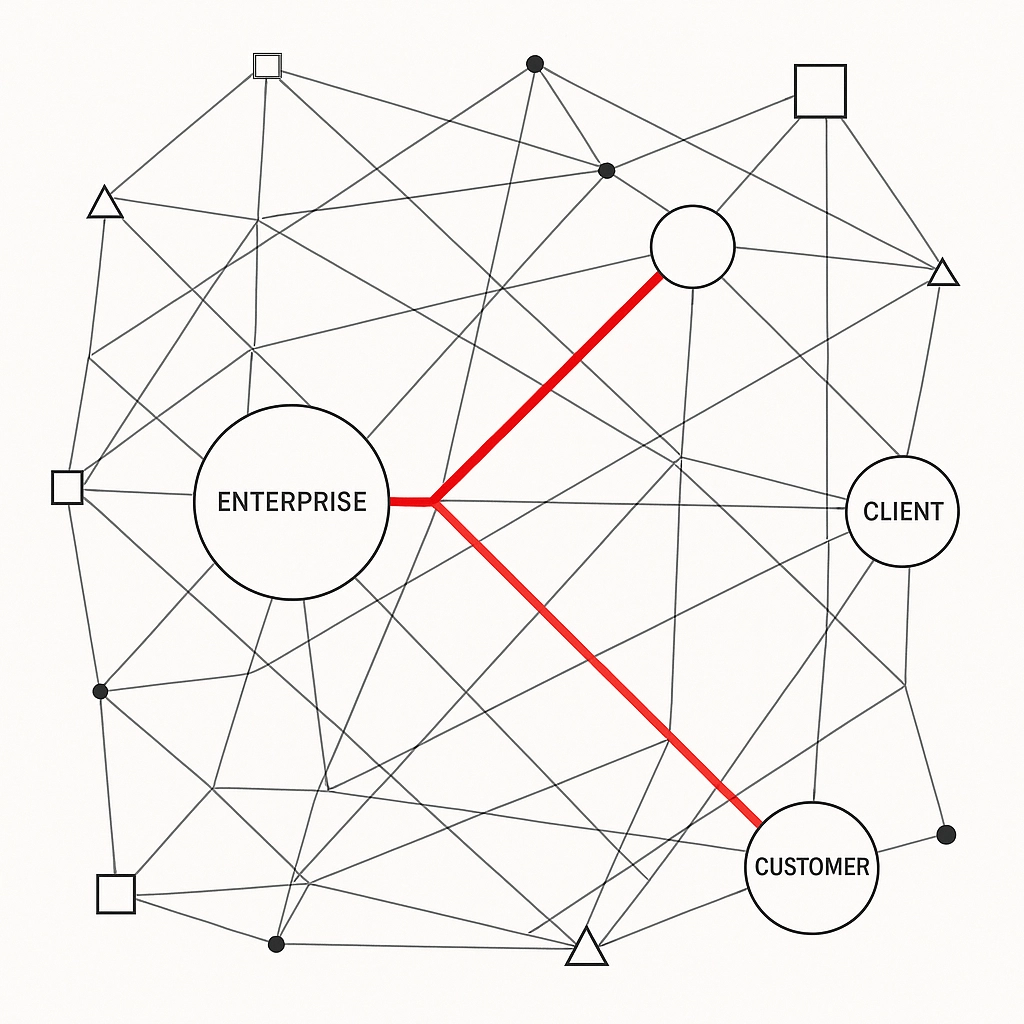
Social Proof at Scale
High-value prospects need to see evidence of success with similar companies in similar situations.
Case Study Architecture
Develop case studies that mirror their specific situation:
- Similar company size and industry
- Comparable challenges and objectives
- Specific tactics and results
- Timeline and investment levels
- Long-term outcomes and partnership evolution
Reference Network Development
Build a network of clients willing to serve as references for specific situations. Maintain a database that includes:
- Client industry and size
- Services provided
- Results achieved
- Willingness to serve as reference
- Preferred communication method
Technology Stack for Modern Agency Sales
Your sales process is only as strong as the technology supporting it. Here's the essential stack for high-converting agency sales.
CRM Configuration for Value-Based Sales
Salesforce/HubSpot Customization
Configure your CRM to track value-based metrics:
- Projected client ROI
- Competitive displacement opportunities
- Stakeholder engagement scores
- Implementation readiness assessment
- Reference matching capabilities
Custom Fields and Workflows
Create custom fields for:
- Client's current marketing spend
- Competitive analysis completion status
- Value demonstration materials shared
- Implementation roadmap status
- Stakeholder engagement timeline
Sales Enablement Tools
Presentation and Proposal Automation
Use tools like Proposify or PandaDoc to create dynamic proposals that adjust based on prospect-specific data.
Competitive Intelligence Platforms
Invest in tools like Crayon or Klenty for real-time competitive intelligence that informs your value positioning.
ROI Calculators and Modeling Tools
Develop interactive ROI calculators that prospects can use to model different investment scenarios. This positions you as a consultative partner while generating qualified leads.

Measuring and Optimizing Your Modern Sales Process
What gets measured gets managed. Here's how to track and optimize your value-based sales process for continuous improvement.
Key Performance Indicators (KPIs)
Traditional Metrics to Abandon
- Cold call connection rates
- Email open rates
- Generic "pipeline value"
Modern Metrics to Track
- Value demonstration completion rate
- Stakeholder engagement depth
- Implementation readiness score
- Competitive win rate by industry
- Average deal size growth
- Sales cycle compression rate
Conversion Optimization Framework
A/B Testing Sales Materials
Test different approaches to:
- Value proposition messaging
- Competitive analysis presentation format
- Proposal structure and pricing presentation
- Follow-up sequence timing and content
Sales Process Analytics
Use tools like Gong or Chorus to analyze sales conversations and identify:
- Questions that advance opportunities
- Objections that stall deals
- Successful positioning strategies
- Optimal meeting structures
Continuous Improvement Process
Monthly Sales Process Reviews
Analyze:
- Win/loss patterns by industry and deal size
- Stakeholder engagement effectiveness
- Competitive displacement success rates
- Implementation timeline accuracy
Quarterly Process Evolution
Update your sales process based on:
- Market feedback and buyer behavior changes
- Competitive landscape shifts
- Internal capability enhancements
- Technology and tool improvements
Implementation Roadmap: Your Next 90 Days
Here's exactly how to implement this modern sales process in your agency over the next 90 days.
Days 1-30: Foundation Building
Week 1-2: Process Documentation
- Document your current sales process
- Identify gaps between current and modern approach
- Create stakeholder maps for your top 10 prospects
Week 3-4: Tool Setup and Training
- Configure CRM for value-based tracking
- Set up competitive intelligence tools
- Train team on new discovery methodology
Days 31-60: Content and Materials Development
Week 5-6: Value Research Framework
- Create templates for competitive analysis
- Develop ROI modeling spreadsheets
- Build case study database
Week 7-8: Sales Materials Creation
- Design presentation templates
- Create proposal frameworks
- Develop email sequences
Days 61-90: Implementation and Optimization
Week 9-10: Pilot Testing
- Test new process with 5-10 prospects
- Gather feedback and refine approach
- Train team on lessons learned
Week 11-12: Full Implementation
- Roll out process to entire team
- Establish reporting and tracking systems
- Begin optimization cycles
Advanced Strategies for Scaling Your Modern Sales Process
Once you've mastered the fundamentals, here are advanced strategies for scaling your results.
Industry-Specific Value Propositions
Vertical Market Specialization
Develop deep expertise in 2-3 verticals with specialized approaches:
- Industry-specific competitive landscapes
- Regulatory and compliance considerations
- Typical buying cycles and stakeholder structures
- Success metrics and ROI calculations
Case Study Libraries by Vertical
Build comprehensive case study libraries that include:
- Industry-specific challenges and solutions
- Regulatory compliance examples
- Competitive displacement stories
- Long-term partnership evolution
Partnership and Referral Integration
Strategic Partnership Development
Build relationships with complementary service providers:
- Technology vendors (your prospects use)
- Management consultancies
- Industry associations
- Conference organizers
Referral Process Systematization
Create formal referral processes that include:
- Partner enablement materials
- Referral tracking and attribution
- Mutual success metrics
- Regular partnership reviews
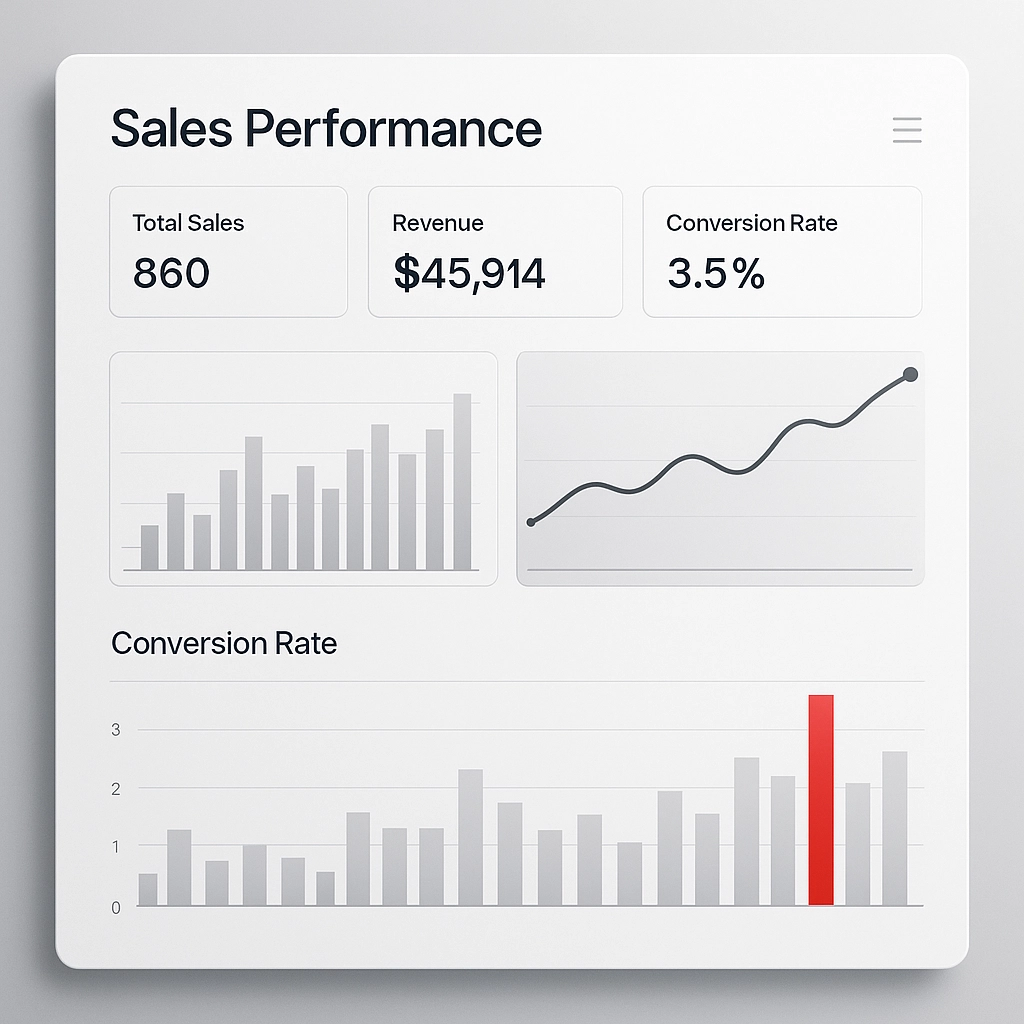
The Mindset Shift: From Vendor to Strategic Partner
The biggest barrier to implementing modern sales processes isn't tactical: it's psychological. You need to fundamentally shift how you position yourself in the market.
Moving Beyond Service Provider Mentality
Strategic Consultant Positioning
Position yourself as a strategic consultant who happens to provide marketing services, not a marketing agency trying to consult.
This means:
- Leading conversations with business strategy
- Talking revenue impact before tactics
- Challenging client assumptions respectfully
- Providing insights they can't get elsewhere
Investment vs. Expense Framing
Help prospects think about your services as investments with measurable returns, not expenses to minimize.
Use language like:
- "Investment in growth" vs. "marketing spend"
- "Revenue opportunity" vs. "potential results"
- "Strategic partnership" vs. "service agreement"
- "Implementation roadmap" vs. "project plan"
Building Authority Through Content and Thought Leadership
Industry Research and Analysis
Publish original research that positions you as an industry expert:
- Annual industry surveys
- Competitive landscape analysis
- Trend predictions and forecasting
- Case study aggregation and insights
Speaking and Conference Strategy
Build visibility through strategic speaking:
- Industry conference presentations
- Webinar series hosting
- Podcast guest appearances
- Executive roundtable facilitation
Putting It All Together: Your Modern Sales Process Checklist
Here's your implementation checklist to ensure nothing falls through the cracks:
Pre-Contact Preparation
☐ Complete competitive analysis for each prospect
☐ Develop financial impact models
☐ Create preliminary implementation roadmaps
☐ Research stakeholder structures and priorities
Initial Outreach
☐ Lead with specific, data-backed insights
☐ Reference competitive positioning
☐ Offer value before requesting time
☐ Customize messaging for each stakeholder
Discovery and Demonstration
☐ Present analysis before asking questions
☐ Focus discovery on implementation details
☐ Address each stakeholder's specific priorities
☐ Demonstrate understanding through specificity
Proposal and Implementation Planning
☐ Structure proposal as implementation roadmap
☐ Include specific timelines and dependencies
☐ Present investment in context of ROI
☐ Provide decision-support tools
Decision Facilitation
☐ Address objections through transparency
☐ Facilitate stakeholder alignment
☐ Remove decision-making friction
☐ Focus on implementation readiness
Measurement and Optimization
☐ Track value-based metrics
☐ Analyze win/loss patterns
☐ Optimize based on data
☐ Evolve process continuously
The Reality Check: Why This Works
I've used this exact framework to help agencies transform their sales results. One client went from closing 15% of qualified opportunities at an average deal size of $25K to closing 67% of opportunities at an average deal size of $85K.
The difference? They stopped trying to convince prospects to buy and started helping prospects make informed decisions.
Modern buyers don't need to be sold: they need to be supported through their decision-making process with relevant insights, transparent communication, and risk mitigation.
Your prospects are already going to buy someone's services. Your job is to position yourself as the obvious choice by demonstrating superior understanding, capability, and partnership potential.
Now stop reading and start implementing. The agencies that adapt to modern sales methodologies first will capture disproportionate market share as competition intensifies.
The choice is yours: evolve your sales process or watch competitors with modern approaches capture your prospects.
What are you going to do about it?
